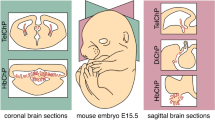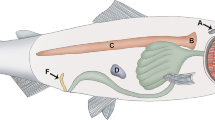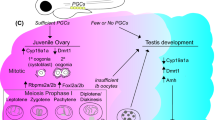Abstract
The cephalochordate amphioxus is the closest living invertebrate relative of the vertebrates. It is vertebrate-like in having a dorsal, hollow nerve cord, notochord, segmental muscles, pharyngeal gill slits and a post-anal tail that develops from a tail bud. However, amphioxus is less complex than vertebrates, lacking neural crest and having little or no mesenchyme. The genetic programs patterning the amphioxus embryo are also similar to those patterning vertebrate embryos, although the amphioxus genome lacks the extensive gene duplications characteristic of vertebrates. This relative structural and genomic simplicity in a vertebrate-like organism makes amphioxus ideal as a model organism for understanding mechanisms of vertebrate development.
Similar content being viewed by others
Author information
Authors and Affiliations
Corresponding author
Additional information
Received 18 February 2004; received after revision 9 April 2004; accepted 19 April 2004
Rights and permissions
About this article
Cite this article
Holland, L.Z., Laudet, V. & Schubert, M. The chordate amphioxus: an emerging model organism for developmental biology. CMLS, Cell. Mol. Life Sci. 61, 2290–2308 (2004). https://doi.org/10.1007/s00018-004-4075-2
Issue Date:
DOI: https://doi.org/10.1007/s00018-004-4075-2




